Sinhala slang is used by speakers of the Sinhala language in Sri Lanka, as well as many other Sinhala-speaking individuals.
Sinhala slang is used by speakers of the Sinhala language in Sri Lanka, as well as many other Sinhala-speaking individuals.
Sinhala dialects are the various minor variations of Sinhalese language which are based on the locale (within Island of Sri Lanka) and the social classes and social groups (e.g. university students). Most of the slang are common across all dialects. However certain slang are restricted to certain social classes or groups.
Sinhalese is an Indo-Aryan language and exhibits a marked diglossia between the spoken and written forms. As such, it is also difficult to find instances of colloquial slang in any form of formal literature. Also certain slang (specially sexual slang and swear words) are considered to be so taboo that definitions of those words are not found in any public domain literature. They are not found in any form of media, publications; not even popular websites show them, apart from unmoderated blogs and talk pages. Having said that, most of the non-taboo slang given as examples below are in widespread and frequent use even in popular media - especially in various FM radio channels and popular TV channels.
Each dialect and within each dialect; regional, class, age and gender differences would lead to unique slang, vulgarisms, profanities and swear words. Following is a list of potential slang by different categories as of 2007.
Certain slang carry covert prestige and are used only within certain social groups and thus not often understood outside of that group. For example, Āyis Ammā (ආයිස් අම්මා) is a slang term used by certain parts of Sri Lankan society to express pleasurable surprise (similar to wow!). This slang is not picked up by most of the social classes who may regard themselves as "more refined". Instead these people might use Shā (ෂා) to express the same feeling.
Within Sri Lankan universities, diverse slang exists, which is only used and understood by the university students and the alumni. For example Kuppiyə (කුප්පිය) which literally means 'small bottle' or 'small lamp' is used to refer to an informal tuition class conducted by a student, for a small study group free of charge. Within the Army, the term Āti (ආටි) is used to refer to artillery shells so that Āti gahanəvā (ආටි ගහනවා) means shelling. These terms such as Kuppiyə (කුප්පිය) and Āti (ආටි) are mostly not understood outside of the demographic group that uses them.
Sinhalese has an all-purpose suffix කාරයා (kārəyā) which when suffixed to a regular noun (which denotes a demographic group, etc.), creates an informal and (sometimes) disrespectful reference to a person of that demographic group. Most native speakers of Sinhalese liberally use this suffix when they chat informally. As an alternative, Manussaya (Mānnusəyaa meaning person) is used on words that cannot be said via karaya. . However they also make great effort to avoid kārəyā when they speak in a formal venue.
e.g.:
Sinhalese has an all-purpose odd suffix තුමා (thuma) (and තුමිය (thumiya) for females) which when suffixed to a pronoun creates a formal and respectful tone in reference to a person. Most native speakers of Sinhalese rarely use this suffix in conversation due to its nascency.
e.g.:
Buddhism being the primary religious tradition in Sinhalese culture, blasphemy in the Sinhalese language primarily refers to Buddhism. However, there exists only a very few instances of Sinhalese slang which can be categorised as blasphemy on Buddhism.
Similarly the term "Ganayā" (ගණයා) is blasphemous; it is a very disrespectful reference to a Buddhist monk.
The term "Rahath Unā"(රහත් උනා) can also be treated as blasphemy, due to the fact that the religious term "attaining Arahat (enlightened) state" is used here to mean something non-religious and mundane. The slang "'Rahath Unā'" usually refers to the situation where someone sneaks out from somewhere, without telling anyone. This slang, however is well accepted in the mainstream diglossia, unlike other blasphemy terms discussed above. "Erdhi Unā"(එර්දි උනා) is a similar term which can be treated as blasphemy on the same grounds. The term "(Himin Særē) Māru Unā" ((හිමින් සැරේ) මාරු උනා) gives the same meaning without blasphemy.
For the purpose of swearing (for fun, and as nicknames), it is a common practice in many languages/cultures to equate people with animals; and Sinhalese is no exception. Most languages/cultures have a popular set of such animals references used for this purpose. Each animal represents a particular set of characteristics which can be positive or negative. Referencing people with the word for a "dirty" animal like a pig has negative connotation; likewise, a reference to a strong animal like "lion" has a positive one.
Cow or bull ("Gonā"[ගොනා]/"Harakā"[හරකා]) is an animal reference frequently used in Sinhala. For example, "Gon Vædak" (ගොන් වැඩක්) means a "stupid deed".
Most of the sexual slang, euphemisms and sexual innuendo in Sinhalese discourse has a strong male perspective. Irreverence and disrespect is a common trait in sexual slang (due to its very nature of being "sexual"). Some of the slang can be offensive to both genders, but in general, more sexual slang is used to refer to females than males. This type of sexual slang ranges from "mild" to "severe" and sometimes borders the "extreme taboo". It is advisable to avoid slang of this nature in decent company.
Sexual profanity in Sinhalese is regarded highly taboo in Sinhalese speaking society, and are not supposed to be written down in any form, in any venue. These terms are collectively called කුණු හරුප (kuṇu harupa) in Sinhalese which literally means 'dirty/rotten utterings'. It is difficult and nearly impossible to find references to Sinhalese profanity. Definitions of such are not found in any public domain literature in the Internet or outside of Internet, apart from occasional un-moderated talk page or a blog in the internet, or graffiti and scribbles found in public toilets.

This is a demography of the population of Sri Lanka including population density, ethnicity, education level, health of the populace, economic status, religious affiliations and other aspects of the population.

The Sinhalese people, also known as the Sinhalese are an Indo-Aryan ethno-linguistic group native to the island of Sri Lanka. Historically, they were also known as the Helas or the Lion People. They are the largest ethnic group in Sri Lanka, constituting about 75% of the Sri Lankan population and number more than 15.2 million.
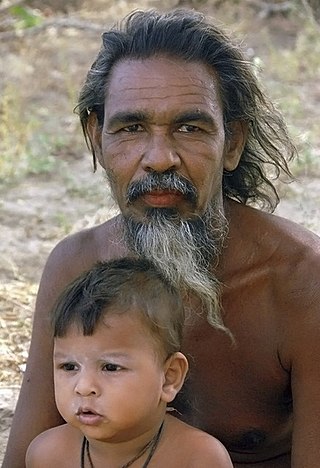
The Vedda, or Wanniyalaeto, are a minority indigenous group of people in Sri Lanka who, among other sub-communities such as Coast Veddas, Anuradhapura Veddas and Bintenne Veddas, are accorded indigenous status. The Vedda minority in Sri Lanka may become completely assimilated. Most speak Sinhala instead of their indigenous languages, which are nearing extinction. It has been hypothesized that the Vedda were probably the earliest inhabitants of Sri Lanka and have lived on the island since before the arrival of other ethnic groups in India.
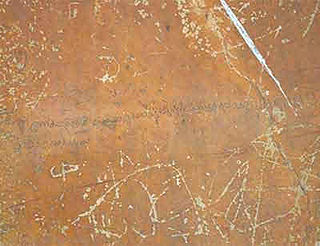
Sinhala, sometimes called Sinhalese, is an Indo-Aryan language primarily spoken by the Sinhalese people of Sri Lanka, who make up the largest ethnic group on the island, numbering about 16 million. Sinhala is also spoken as the first language by other ethnic groups in Sri Lanka, totalling about 2 million speakers as of 2001. It is written using the Sinhala script, which is a Brahmic script closely related to the Grantha script of South India.
Sri Lankan English (SLE) is the English language as it is used in Sri Lanka, a term dating from 1972. Sri Lankan English is principally categorised as the Standard Variety and the Nonstandard Variety, which is called as "Not Pot English". The classification of SLE as a separate dialect of English is controversial. English in Sri Lanka is spoken by approximately 23.8% of the population (2012 est.), and widely used for official and commercial purposes. Sri Lankan English being the native language of approximately 5400 people thus challenges Braj Kachru's placement of it in the Outer Circle. Furthermore, it is taught as a compulsory second language in local schools from grade one to thirteen, and Sri Lankans pay special attention on learning English both as children and adults. It is considered even today that access and exposure to English from one's childhood in Sri Lanka is to be born with a silver spoon in one's mouth.
The Official Language Act , commonly referred to as the Sinhala Only Act, was an act passed in the Parliament of Ceylon in 1956. The act replaced English with Sinhala as the sole official language of Ceylon, with the exclusion of Tamil.
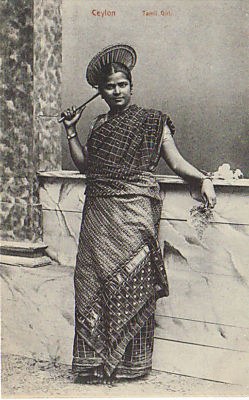
Sri Lankan Tamils, also known as Ceylon Tamils or Eelam Tamils, are Tamils native to the South Asian island state of Sri Lanka. Today, they constitute a majority in the Northern Province, form the plurality in the Eastern Province and are in the minority throughout the rest of the country. 70% of Sri Lankan Tamils in Sri Lanka live in the Northern and Eastern provinces.
Sinhalisation is a term, derived from Sinhala, that has number of meanings in Sri Lanka. it is mainly the assimilation into Sinhalese Culture in which the members of an ethno-cultural group are steadily integrated or "absorbed" into established Sinhalese culture.

The Sri Lankan Tamil dialects or Ceylon Tamil or commonly in Tamil language Eelam Tamil are a group of Tamil dialects used in Sri Lanka by its native Tamil people and Eastern Moors, and Coast Veddas that is distinct from the dialects of Tamil spoken in Tamil Nadu and Sri Lanka. It is broadly categorized into three sub groups: Jaffna Tamil, Batticaloa Tamil, and Negombo Tamil dialects. But there are number of sub dialects within these broad regional dialects as well. These dialects are also used by ethnic groups other than Tamils and Moors such as Sinhalese people, Portuguese Burghers and the indigenous Coastal Vedda people.
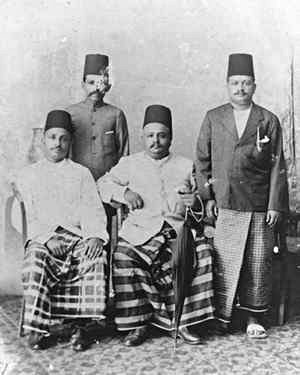
Sri Lankan Moors are an ethnic minority group in Sri Lanka, comprising 9.3% of the country's total population. Most of them are native speakers of the Tamil language. The majority of Moors who aren’t native to the North and East also speak Sinhalese as a second language. They are predominantly followers of Islam. The Sri Lankan Muslim community is mostly divided between Sri Lankan Moors, Indian Moors, Sri Lankan Malays and Sri Lankan Bohras. These groups are differentiated by lineage, language, history, culture and traditions.
Negombo Tamil dialect or Negombo Fishermen's Tamil is a Sri Lankan Tamil language dialect used by the fishers of Negombo, Sri Lanka. This is just one of the many dialects used by the remnant population of formerly Tamil speaking people of the western Puttalam District and Gampaha District of Sri Lanka. Those who still identify them as ethnic Tamils are known as Negombo Tamils or as Puttalam Tamils. Although most residents of these districts identify them as ethnic Sinhalese some are bilingual in both the languages.
The origins of the Sri Lankan Civil War lie in the continuous political rancor between the majority Sinhalese and the minority Sri Lankan Tamils. According to Jonathan Spencer, a social anthropologist from the School of Social and Political Studies of the University of Edinburgh, the war is an outcome of how modern ethnic identities have been made and re-made since the colonial period, with the political struggle between minority Tamils and the Sinhalese-dominant government accompanied by rhetorical wars over archeological sites and place name etymologies, and the political use of the national past.

Sri Lankan place name etymology is characterized by the linguistic and ethnic diversity of the island of Sri Lanka through the ages and the position of the country in the centre of ancient and medieval sea trade routes. While typical Sri Lankan placenames of Sinhalese origin vastly dominate, toponyms which stem from Tamil, Dutch, English, Portuguese and Arabic also exist. In the past, the many composite or hybrid place names and the juxtaposition of Sinhala and Tamil placenames reflected the coexistence of people of both language groups. Today, however, toponyms and their etymologies are a source of heated political debate in the country as part of the political struggles between the majority Sinhalese and minority Sri Lankan Tamils.
Sri Lankan Malay is a creole language spoken in Sri Lanka, formed as a mixture of Sinhala and Shonam, with Malay being the major lexifier. It is traditionally spoken by the Sri Lankan Malays and among some Sinhalese in Hambantota. Today, the number of speakers of the language have dwindled considerably but it has continued to be spoken notably in the Hambantota District of Southern Sri Lanka, which has traditionally been home to many Sri Lankan Malays.
Vedda is an endangered language that is used by the indigenous Vedda people of Sri Lanka. Additionally, communities such as Coast Veddas and Anuradhapura Veddas who do not strictly identify as Veddas also use words from the Vedda language in part for communication during hunting and/or for religious chants, throughout the island.
Kandarodai is a small hamlet and archaeological site of Chunnakam town, a suburb in Jaffna District, Sri Lanka.
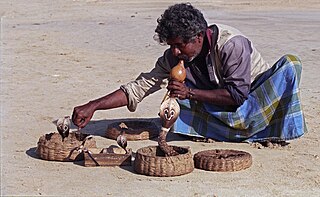
The Sri Lankan Telugus are an ethnic group from Sri Lanka who trace their origins to Telugu-speaking regions centuries ago. They are commonly known in English as Sri Lankan Gypsies, in Sinhala as Ahikuntaka, and in Tamil as Kuravar. However, these terms are considered as offensive by the community, who call themselves as Telugu. They are the only nomadic group of people living in Sri Lanka. They live in small palmyra huts for approximately one week in one place. Their ancestral language is an old form/dialect of Telugu, though most now speak Sinhala or Tamil. Various governments, NGOs and missionary societies have made attempts to settle them down, and thus some are settled in villages. Their traditional occupations are fortune telling, snake charming and training monkeys and dogs for performances, though modernisation has forced many into wage labour. Those who are settled in resettlement villages are subsistence farmers and farm hands to other farmers. They also speak Sinhalese or Tamil based on their area of settlement. Most seem to be settled in the eastern Batticaloa district. The traditional faith is a form of Shaivism, though a large number of them had converted to Buddhism and some to Christianity. According to a 2017 survey by the Government of Sri Lanka, their population is ~4,000.
Swedish profanity can be divided into several categories. A substantial number of curse words in Swedish have religious origins. Euphemistic variants of the religious curses are commonly used as well. References to genitalia or bodily functions are common in the Swedish profanity vocabulary. Notably, no word for sexual intercourse is commonly used in invectives, unlike many other languages. However, calques of English fuck using knull (noun), knulla (verb) do occur; this comes across as more offensive than fuck does in English. In general, knull(a), along with genitalia slang words like kuk ('cock') and fitta ('cunt') are the most offensive single words. By contrast, most of the traditional religious profanities are not considered very offensive today; this is in line with Sweden's long-standing secularism.
Karaya may refer to: